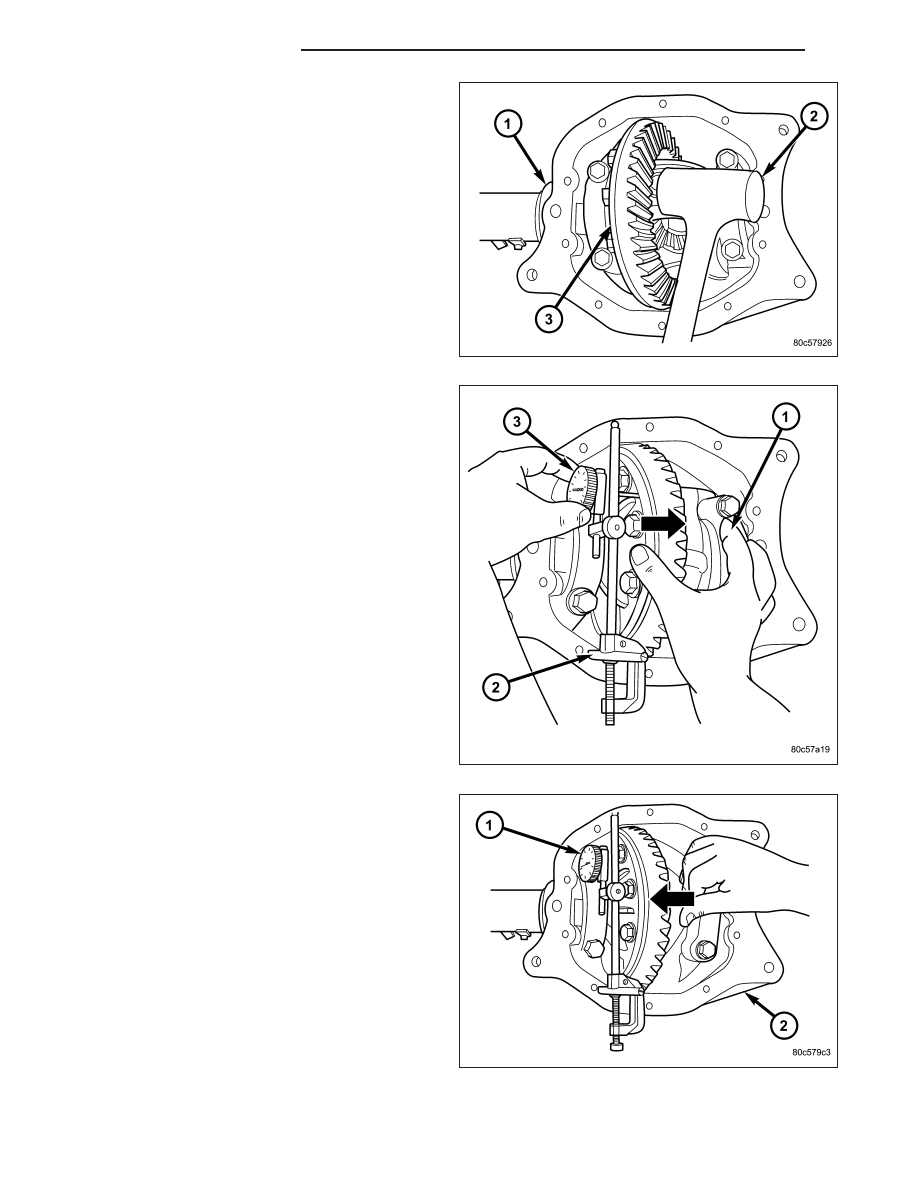Jeep Liberty KJ. Manual - part 285

8. With a dead-blow hammer (2), seat differential
dummy bearing to the ring gear (3) side of the
housing (1).
9. Thread Pilot Stud C-3288-B (2) into rear cover bolt
hole below ring gear.
10. Attach a Dial Indicator C-3339 (3) to the Pilot
Stud. Position the dial indicator plunger on flat
surface between the ring gear bolts.
11. Push and hold differential case to pinion gear side
(1) of the housing and zero dial indicator.
12. Push and hold differential case to ring gear side
of the housing (2) and record dial indicator (1)
reading.
13. Add 0.152 mm (0.006 in.) to the zero end play
total. This new total represents the thickness of
shims to compress or preload the new bearings
when the differential is installed.
14. Rotate dial indicator out of the way on the pilot
stud.
15. Remove differential case and dummy bearings
from the housing.
16. Install the pinion gear in the housing. Install the
pinion yoke and establish the correct pinion rotat-
ing torque.
17. Install differential case and Dummy Bearings
D-348 in the housing.
18. Install a single dummy shim in the ring gear side. Install bearing caps and tighten bolts snug.
3 - 44
FRONT AXLE - 186FIA
KJ